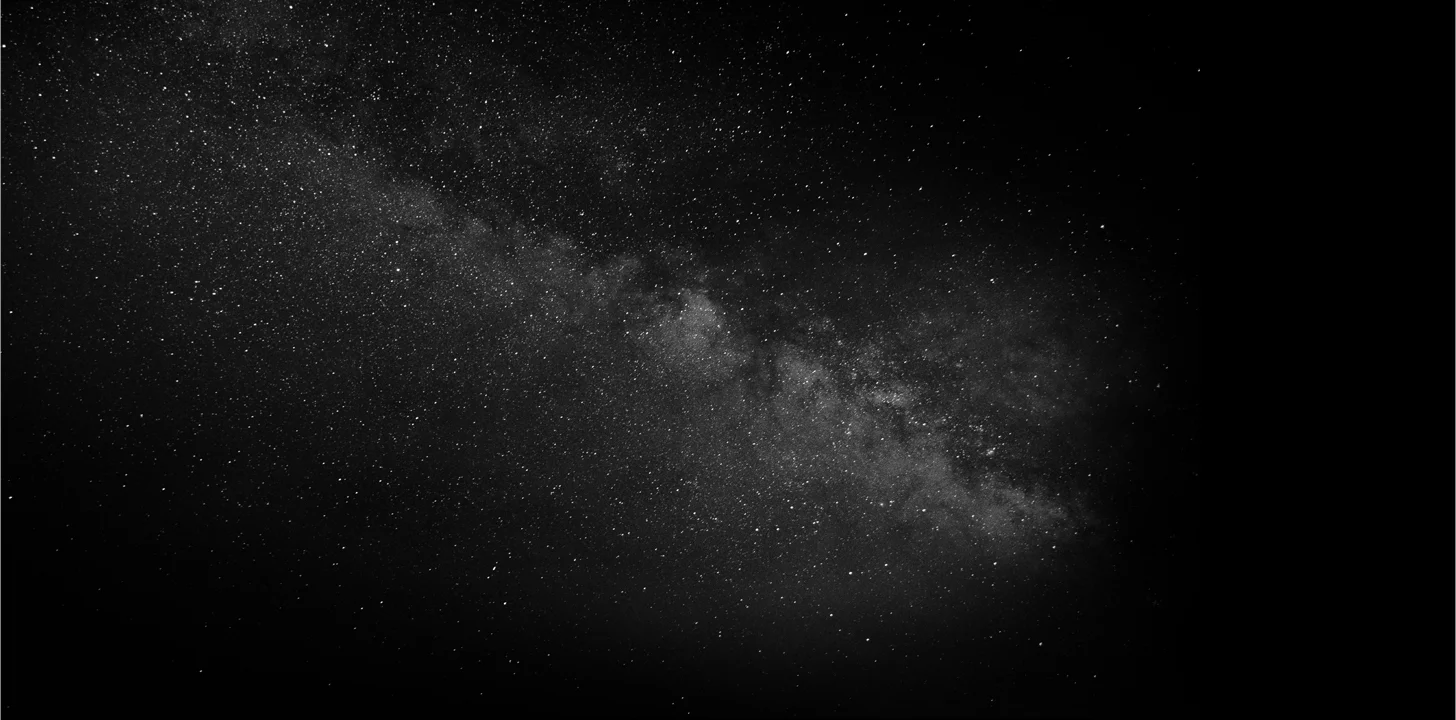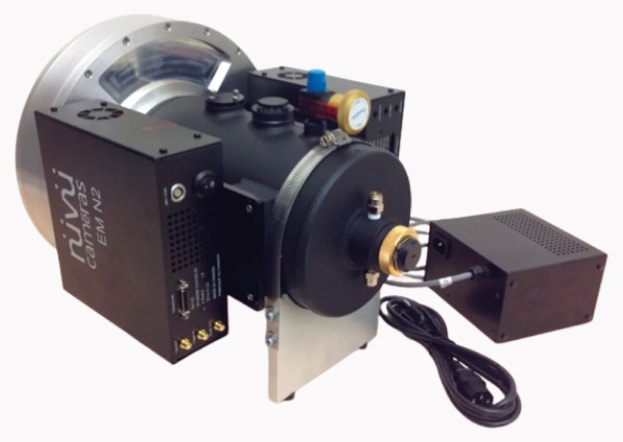Products
Your all-inclusive solution
All Products
Download our catalog
Get our Catalog
Applications
This is the EMCCD’s missing link to compete against other large format imaging technologies like CMOS and CCD. Nüvü Camēras is the first company to efficiently support the state-of-the-art Teledyne-e2v CCD282 sensor (further called 4K EMCCD), thanks to the modified CCCP 4K.

The 4K EMCCD is a unique high-resolution, low-noise EMCCD detector; perfect for applications with wide fields of view or high-resolution spectroscopy. The new EMCCD sensor features 4096 pixels x 4096 pixels, with 12 μm square pixel area, in a split-frame transfer architecture. The die size of the largest EMCCD detector is 104 mm x 51 mm with a total package size of 125 mm x 70 mm.

Thanks to Nüvü’s proprietary electronic controller, the CCCP 4K, the detector’s 8 outputs are supported through readout electronics and the dominant source of noise of EMCCDs at low flux level and high frame rate, the Clock Induced Charges (CIC), are reduced at the minimum level and allow for efficient photon counting. The CCCP 4K enables full control of 8-output CCD or EMCCD detectors clocks and flexible readout sequences, which is crucial to reach minimal noise. This technology is also available with space-qualified components (See CCCPs). Nüvü Camēras is currently the only EMCCD manufacturer supporting the largest format EMCCD detector at 8 outputs.
The 4k EMCCD detector is significantly more sensitive and a better alternative to the more commonly used CCD231-84 16 megapixel detector. Indeed, EMCCD technology allows for better low-light imaging performances compared to a standard CCD and has photon-counting capabilities.

High-resolution spectroscopy
Space situational awareness
Full sky meteorite & space debris tracking
Hyperspectral imaging
Solar imaging
Any questions on integrating the 4K EMCCD solutions to improve your low light imaging system? Nüvü Camēras experts can provide advice and support.
Our patented technology can improve sensitivity, image quality and acquisition rates for any demanding low light application. Please feel free to contact our experienced application scientists for more information.
In addition to an intuitive user manual for the easy installation and use of our products, Nüvü Camēras offers international on-site training as well as complete consulting services. Our team’s passion is the development of the ultra low-light imaging field; as such, we provide a variety of services to efficiently minimize the delay between purchase and discoveries.
Nüvü Camēras is a Canadian company specialized in designing and manufacturing novel EMCCD cameras for fields where the drive for cutting edge instrumentation propels innovation. We improve imaging performance for a number of fields including biomedical research, astronomy, photonics and more. As such, our cameras benefit from extended warranty policies. Basic warranty is 1 year on all parts and labour (subject to the terms and conditions expressed in the respective products’ user manuals).
Extended warranty options also available.
Further customize the product to your requirements for improved performances in your measurement contexts and increased versatility.
Nüvü has already started to further advance the TRL of the electronics to support the Teledyne e2v’s CCD282, with the goal of integrating CCCPs 4k to future space missions planning to use large format EMCCD.
A variety of options are available.
The darkest EMCCD cameras are manufactured by Nüvü Camēras. The secret? The CCD Controller for Counting Photons (CCCP), an innovative technology that virtually suppresses clock-induced charges (CIC), and a cooling Peltier unit integrated into an ingenious packaging. The thermoelectrically cooled HNü camera operates between -60 and -90°C with outstanding precision to optimize CIC and dark current to their ground level. The images below illustrate the accumulation of dark current when the shutter is closed. The darker the image, the less noise is present.


At high readout speeds, the electron transfer from one potential well to the next may be incomplete, leaving a few charges behind. Consequently, the leftover electrons artificially increase the brightness of certain pixels, thereby diminishing the overall image quality with the addition of arbitrary blurry spots. However, Nüvü Camēras’ CCCP preserves charge transfer efficiency (CTE), even at low operating temperature and increased EM gain, while decreasing CIC, yielding highly superior image quality.
As stated in its name, Nüvü Camēras’ proprietary CCD Controller for Counting Photons was purposely designed for photon-counting imaging. As such, no noise-filtering algorithms are used. The amount of noise generated is simply lower, eliminating the risk of removing genuine photoelectrons.
Resorting to arbitrary clocks rather than regular square clocks to shift the electrons through the EMCCD, the CCCP clamps down the generation of clock-induced charges and significantly reduced the detector’s total background noise. Consequently, the EMCCD ability to discriminate single-photon events is considerably increased, and the camera can effectively operate in photon-counting mode as long as the background noise is low.
In extreme cases where the expected intensity is about a single photon per pixel per second or even less, the photon counting (PC) mode is the ideal solution to obtain high-quality images. By eliminating the excess noise factor (ENF) and using a statistically significant threshold, pixels are individually analyzed to determine whether or not they truly detected a photon despite various noise sources.
Displayed below are images of extremely dim light sources — low concentration bioluminescent samples — and illustrate the power of photon-counting imaging in such conditions. All figures are courtesy of the Université de Sherbrooke Hospital Centre.


Single 30 seconds acquisition in conventional (CCD) mode. No details are visible where we should have seen several bioluminescent ATP samples.

Applying electron multiplication to suppress the readout noise reveals the bioluminescent ATP samples in 5 seconds. As such, all six ATP concentrations are detectable with SNR values varying from 1.9 to 14.1 (or, equivalently, 2.8 dB to 11.5 dB).

Photon counting mode with an EMCCD increases the contrast of all ATP samples by suppressing the excess noise factor (ENF), thus allowing considerable improvements in image quality. The SNR increases from 6.6 to 51.3 (equivalent to a range of 8.2 dB to 17.1 dB).
Any questions about EMCCD or low light imaging? Nüvü Camēras experts can provide advices on your low light imaging options.